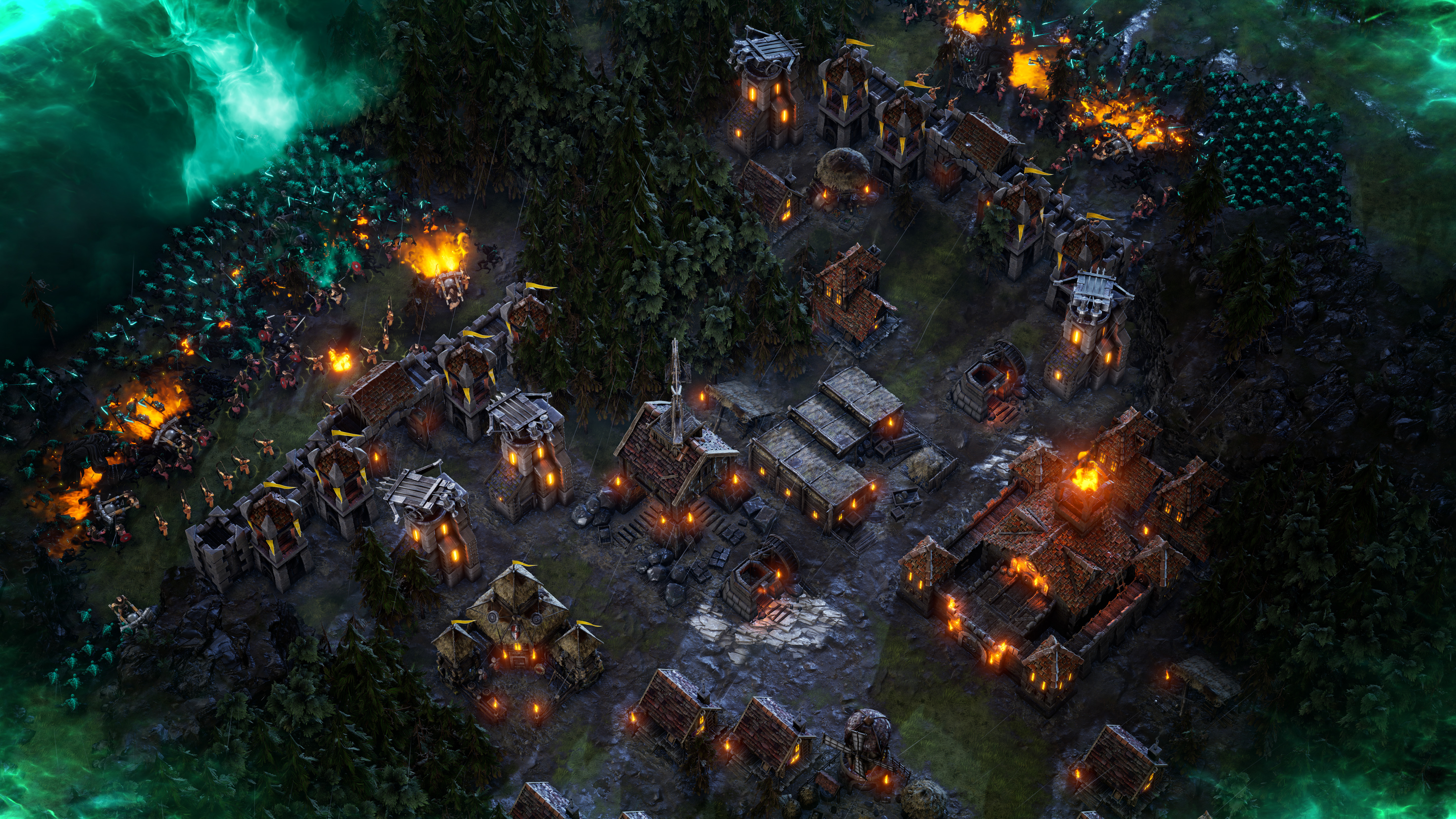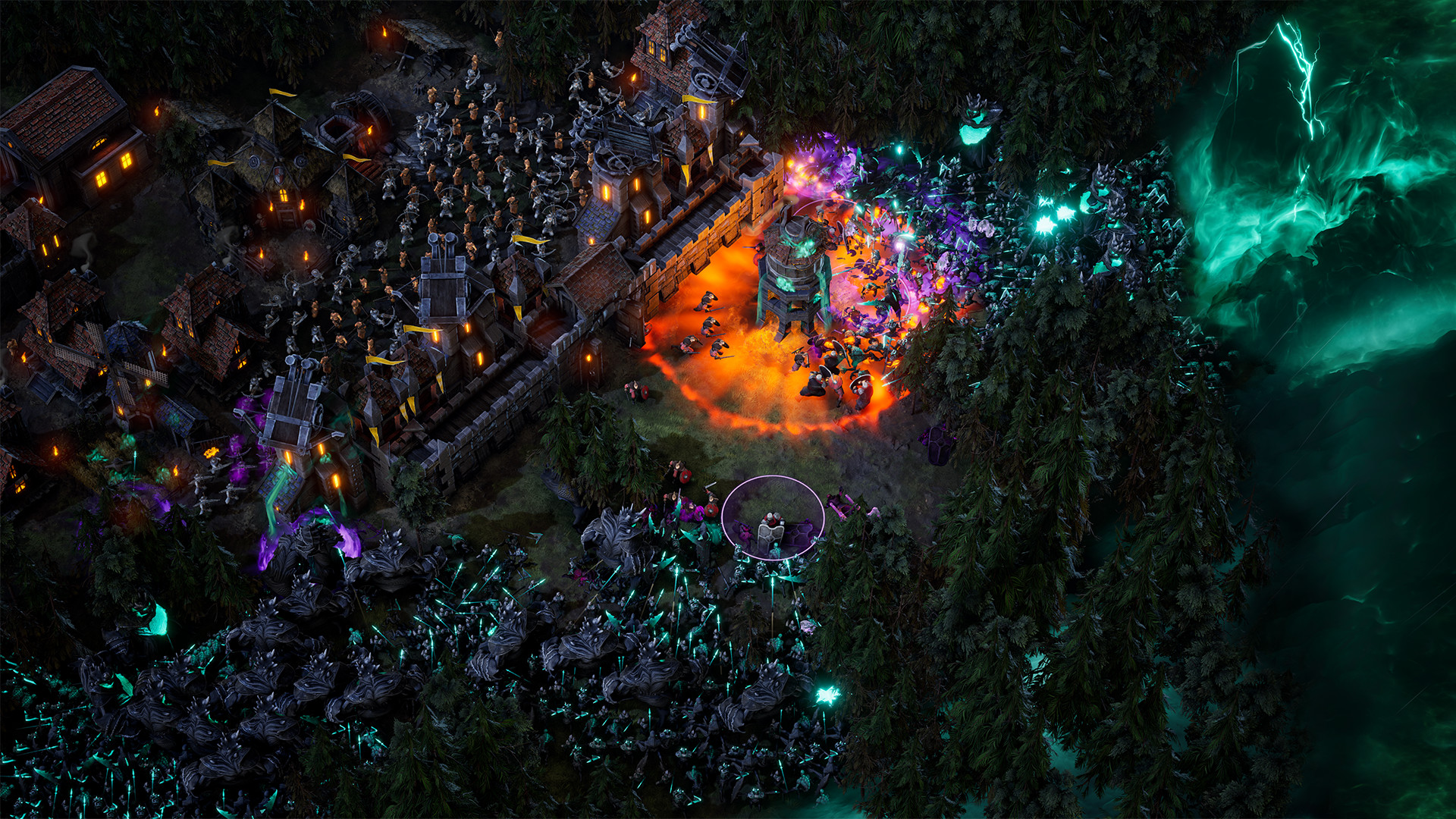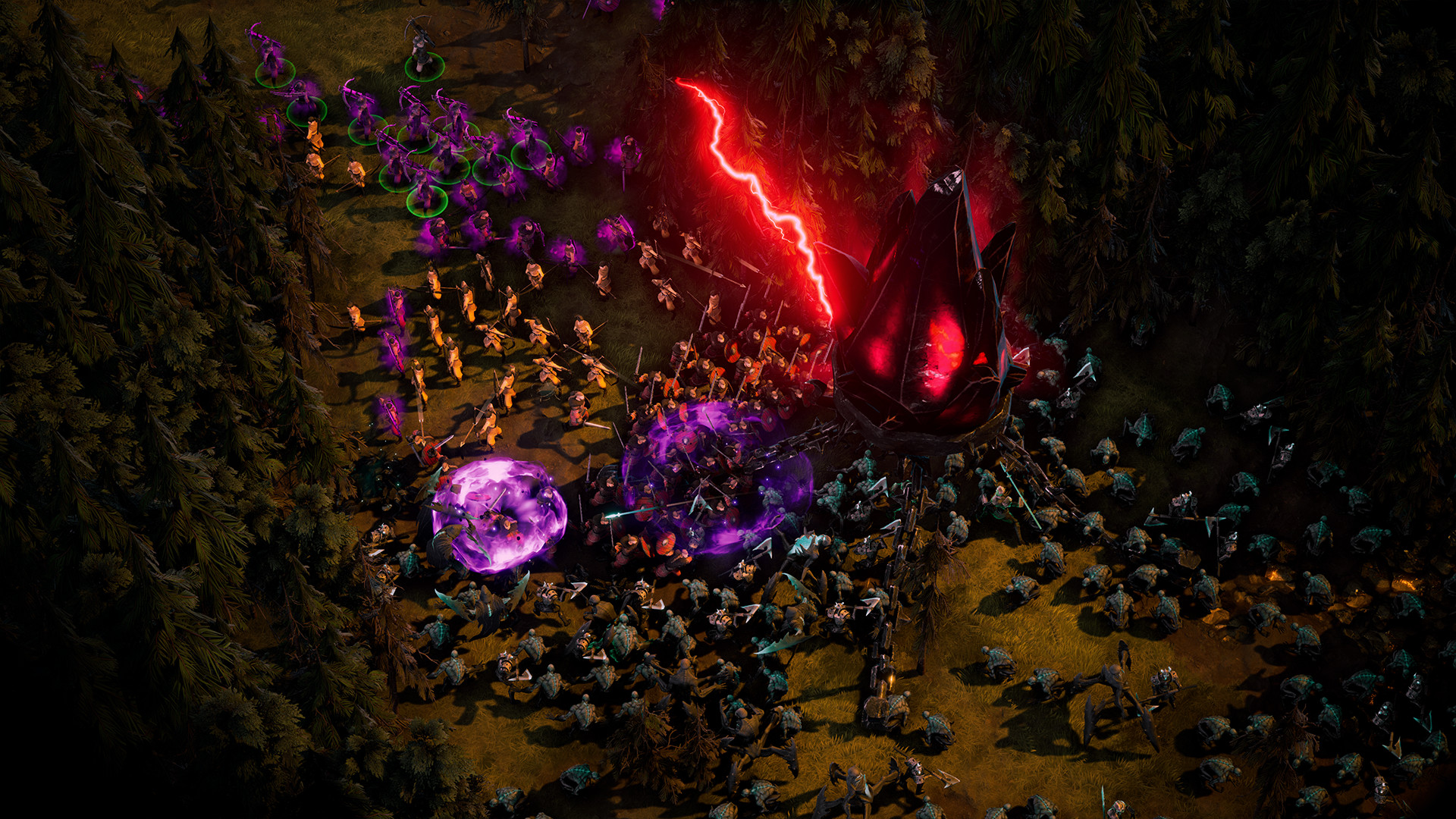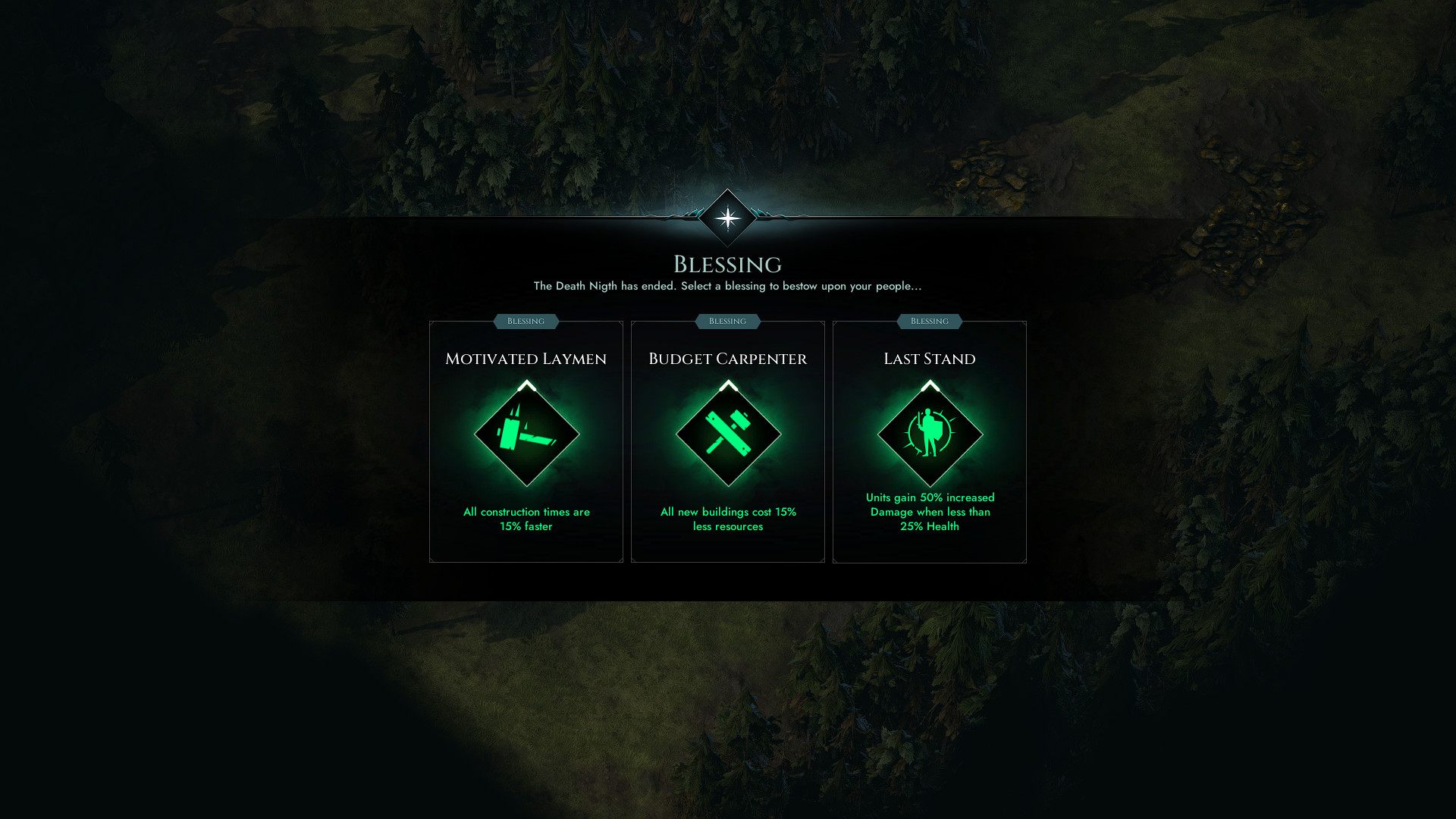In survival RTS Age of Darkness, thousands of enemies aren't the only threat
Please observe and respect the deadly fog.

Time is the most valuable resource in Age of Darkness: Final Stand. RTS magic means the quarries will never run short of iron and stone, and the trees will always have more wood to harvest. But replacing every soldier killed during a careless expansion push means wasting precious seconds that could've been spent reinforcing my defenses for the next Death Night.
Like They Are Billions and other defensive strategy games, Age of Darkness only gives you so much time to prepare before thousands of undead Nightmares come crashing against your walls. Here you're tasked with defending what remains of civilization by building up a stronghold to withstand the Death Nights—floods of undead sent against you every few day/night cycles. Also, there's a deadly fog, which the Steam page references so many times I feel like someone will be insulted if I don't mention it. Fog: deadly. That'll be on the final exam.

A freshly started game in survival mode will look familiar to anyone with RTS experience. You have your central keep, a champion unit and a handful of basic troops, and some nearby resources to begin harvesting. But pretty quickly, Age of Darkness begins diverging from the classic formulas.
The world surrounding your base is more threatening than in other RTS games. Packs of Nightmares are a constant presence across the map, and they can gnaw through your units if you're not paying close attention. Resources aren't abundant, and they're constrained by tight supply and population caps. As a result, your expansion must be cautious and considered, which really fits the mood of desperate survival in humanity's last bastion. Overextension or miscalculation usually means death by way of wasted time and resources.
The scope of strategy is focused. Expansion is checked by tight resources, time constraints, limited safe space—and you won't even know which direction the next Death Night will spill from until the morning before it descends. You're desperate survivors; you don't have the means to build a sprawling mazework. Instead, in the four minutes an in-game day lasts, you're identifying the single chokepoint with the best odds of weathering the storm, and cramming it with as many walls, ballista towers, and freshly trained troops as time will allow. If you're lucky, your defenses will hold until you've put all the oncoming Nightmares through the meat grinder, whether it takes hundreds or thousands.
You won't always be lucky.

Thanks to the roguelike flavoring, though, death doesn't really feel like failure. It's just the inevitable end of another run. When I fail to survive a Death Night, I'm excited to jump back in and put what I'd learned from my last attempt to use, whether it was strategic knowledge like when to prioritize certain resources, or mechanical knowledge like realizing I could build within a scouting unit's line of sight to establish a defensive foothold.
The biggest gaming news, reviews and hardware deals
Keep up to date with the most important stories and the best deals, as picked by the PC Gamer team.
Randomized elements keep the tactics from becoming too flow-charted. Malices provide the Nightmares with a different bonus during every Death Night, and you're rewarded with a choice from a random set of Blessings each assault you beat. You might survive a night in which the undead have a chance to convert your slain soldiers, and earn a chance to recruit an extra troop whenever you train a unit at your barracks.

While they're a satisfying challenge to crack, the Death Nights are visually a little lackluster, even with the "SwarmTech" that claims to allow tens of thousands of AI units on-screen at once. Maybe that's true, but that deadly fog™ (which is one of the best-looking parts of the game, actually) obscures most of those units, except ones that shuffle to the front to smack at your walls. The rest just kind of wait their turn, patiently milling around while your archers pepper them with arrows.
Despite being built around defense, Age of Darkness inspires a proactive style of play I found really refreshing. I'm the type of RTS player who naturally turtles up behind a barricade of photon cannons, slowly accumulating resources until I can release a glob of teched-up, high-end units to steamroll an enemy settlement without much micromanagement. But it was clear before my first Death Night that those instincts were a death sentence. I enjoyed the challenge of striking out on excursions without screwing up my whole run.
While there's currently only the singleplayer survival mode, the Age of Darkness Early Access roadmap lists an eventual multiplayer mode and story campaign, as well as new heroes, units, and buildings. As it stands, Age of Darkness shows a lot of promise.
Lincoln has been writing about games for 11 years—unless you include the essays about procedural storytelling in Dwarf Fortress he convinced his college professors to accept. Leveraging the brainworms from a youth spent in World of Warcraft to write for sites like Waypoint, Polygon, and Fanbyte, Lincoln spent three years freelancing for PC Gamer before joining on as a full-time News Writer in 2024, bringing an expertise in Caves of Qud bird diplomacy, getting sons killed in Crusader Kings, and hitting dinosaurs with hammers in Monster Hunter.

